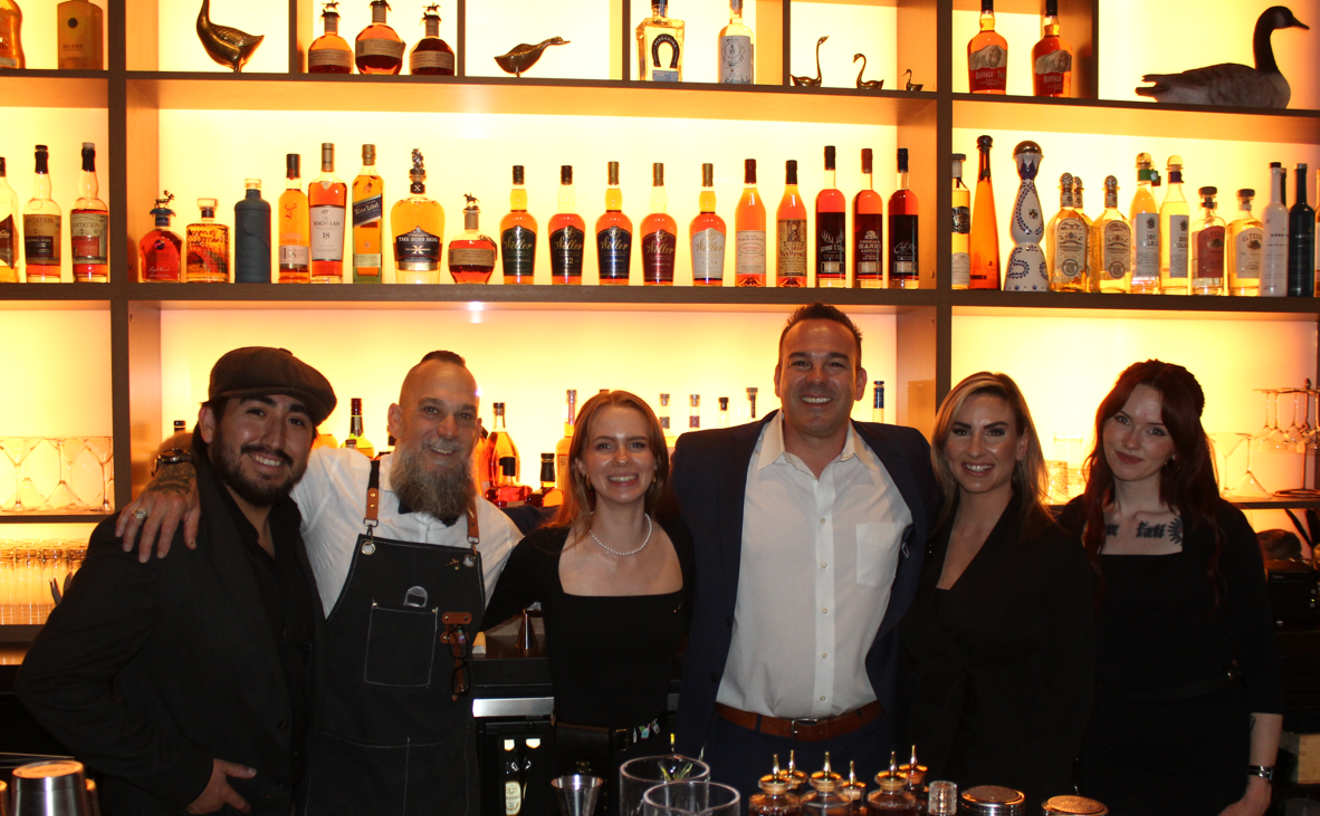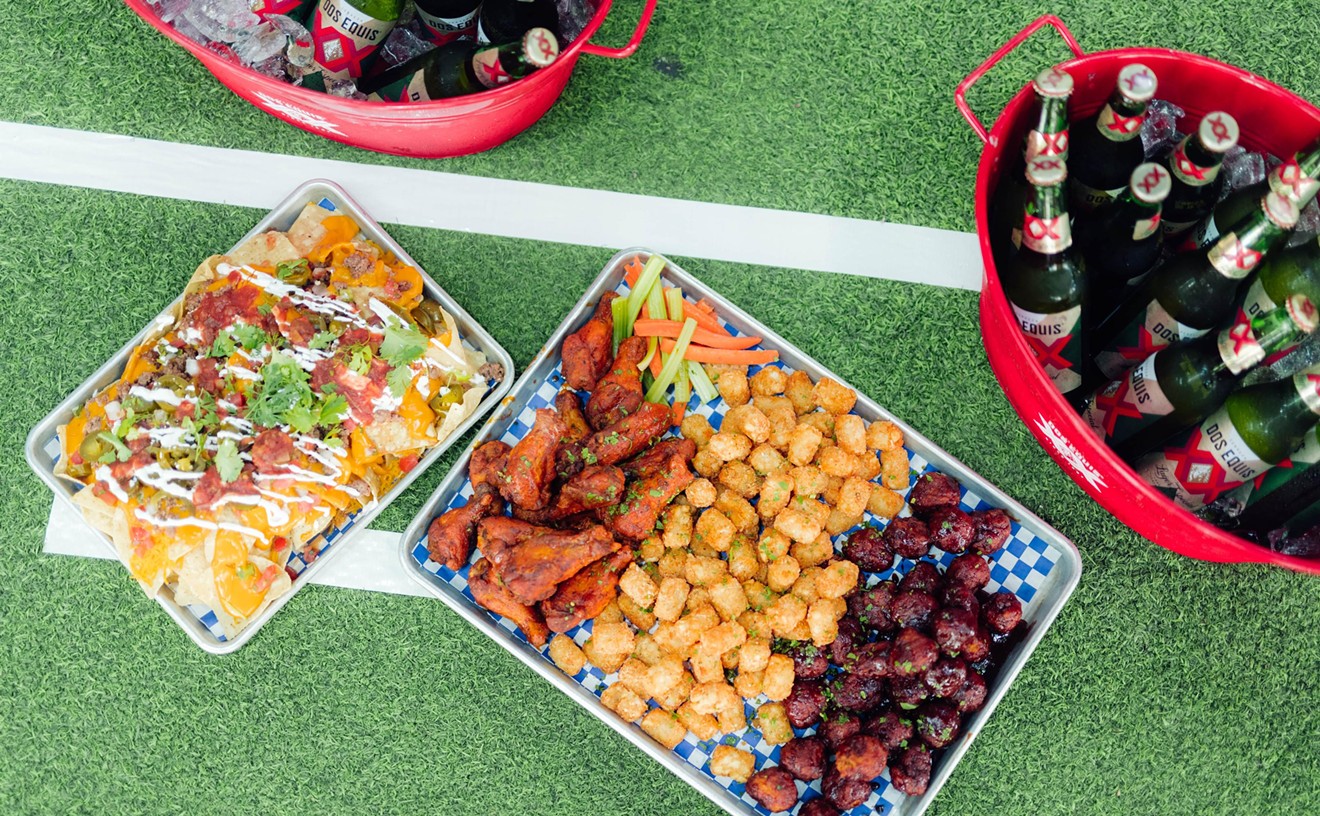Over the weekend, if you haven't heard, the city of Denver was swarmed with brewers and beer nerds celebrating the 2014 edition of the Great American Beer Festival, the largest celebration of American craft beer in the country. While a grand beer-tasting set up in the main hall of the Denver Convention Center is the main draw for drinkers -- nearly 50,000 of them will visit during the three-day fest -- those who brew the beer care more about the GABF judging competition.
The largest contest of its kind, the GABF's beer competition pits more than 5,000 beers against one another in 90 different categories, awarding gold, silver and bronze medals to the brews that best exemplify each style. Medals are highly sought after by brewers, as they're not only excellent marketing tools, but they represent a recognition of damn fine work. That's why many Arizona beer geeks are so disappointed -- of all the breweries producing what they consider world-class beer, only one single Arizona-brewed beer won a medal.
Thing is, it's not easy to win a medal at the GABF. Everything has to fall perfectly into place. Let's take a look at exactly what it takes to win a GABF medal, tracing the path taken by this year's lone winner from our state: College Street Brewhouse & Pub's Brother Dewey's Date Night.
Step One: Brew a Beer Here's how College Street did it: Local beer celebrity James Swann -- then the head beer-buyer at Whole Foods Market in Chandler -- had just come back from Sierra Nevada Brewing Co.'s Beer Camp program, during which he had the opportunity to brew a beer on the massive craft brewery's small pilot system. Deciding he liked the high that cooking and kegging his own brew gave him, Swann sought out another fix and found Colby Hansen, brewmaster at College Street Brewhouse & Pub in Lake Havasu City. The two exchanged emails for three months, slowly arriving at a recipe for a smooth, easy-drinking winter seasonal brewed with organic dates, coriander and nutmeg.
Swann drove up to Havasu and took part in every step of the brewing process, including hand-grating the nutmeg, which was added at the end of the boil and promptly clogged the brewhouse heat exchanger, resulting in the loss of about two barrels of beer. What did make it into the fermenter, however, was deemed pretty tasty. The beer was named after Dewey, a longtime College Street customer with a long beard that gave him the look of a sage monk. A few months later, a second batch was brewed, this time with Andrew Bauman (then a homebrewer and now brewmaster at The Perch Pub & Brewery) as well as with Swann. Hansen, curious to see how the beer aged, stashed away a keg for a later date.
Step Two: Enter Your Beer This is easier said then done. First you'll need to rustle up $160 to cover the application fee (or $385 if you're not a member of the Brewers Association, the group that organizes the GABF). This covers the cost of entering your first beer; any additional entries will cost another $160/$385, and each brewery can submit a maximum of five beers.
Once you've got the cash, you'll need to decide which style category you're going to enter. The GABF recognizes 145 distinct beer styles and groups them into 90 separate categories, and you'll need to read through them all to determine where your beer fits. This is an extremely important step -- judges are taught to make decisions based on a beer's adherence to these standards, and those that don't fit are bound for what judges call the Dream Bucket (as in "keep dreaming about winning"). Decisions must also be made based on the heaviness of the competition in each category. The most popular category, American-style IPA, had 279 entries; most others have between 40 and 90. Brewers who submit beers for judging in the less-entered categories obviously have a better chance of winning.
Having sat on his keg of Brother Dewey's for two years, Hansen determined it would be a perfect entry in Category 27: Aged Beer, which allows for plenty of interpretation in terms of style, ingredients and flavor -- the only real requirement being that the beer is cellared for more than a year and displays some aged character. This category also has the benefit of being one of the least-entered in the entire competition, with just 22 entries this year.
Once you've figured out how you're going to enter your beer, you have to get it to Denver. The BA requires at least six 12-ounce bottles of each brew be entered. This is no problem for commercial breweries that already package their product -- just pull a six-pack off the line and go -- but poses some challenge to smaller brewpubs that only sell beer on draft. Most will buy a hand-operated counter-pressure filler device, which allows one to fill bottles from a keg or bright tank by hand at close to the same level of quality that you'd get on a commercial bottling line. But the process can be very labor-intensive.
Oh, and all this needs to be taking place in June and early July, when GABF registration is open. Your beers will need to arrive during a one-week period in August, so any fall or winter seasonals will need to be brewed early (this may be part of why consumers are seeing pumpkin beers and winter seasonals arriving on shelves earlier than seems appropriate). Pack those beers up tight and hope they make it to Denver in one piece, because after this everything's in the hands of the judges.
Step Three: Get Judged GABF judging takes place over three days during five separate sessions. Each session lasts 3-4 hours and consists of three flights, each with beers of a certain style category. A flight can be anywhere from a couple brews to a maximum of 12, meaning in a given day a judge may be critiquing as many as 36 different beers.
However, there are a lot of judges. This year's GABF competition, in fact, saw its biggest panel of judges ever: 222 beer experts from 10 countries. Judge selection is an extremely important aspect of the competition, says Chris Swersey, the GABF competition manager, and it happens year-round. The yearly cadre of judges is pulled from a group of brewers, beer journalists and other industry experts, all of whom must have some form of beer sensory experience or training (such as Beer Judge Certification Program credentials); can demonstrate ongoing and consistent sensory experience via in-house tasting panels, alternative judging competitions, etc.; and have submitted three references from industry peers who can vouch for their sensory abilities and demeanor. According to Swersey, 60-70 percent of judges chosen each year are brewers or brewery employees; the rest are beer journalists or malt, hop or yeast suppliers. Most are very experienced, especially when it comes to the GABF -- of the 222 judges who lent their palates to this year's competition, just 25 were new.
No matter how new or old the judge, they all rate based on the same criteria: the GABF style guidelines we discussed earlier. However, Swersey does allow that judges sometime diverge from the guidelines. "How each person interprets those guidelines is subjective," he says. "Every judge is human, every palate is unique to that person, every beer can be different to every judge. But we're not interested in what any one judge has to say about any one beer; we're interested in taking the temperature of the judges across the whole."
So here's how it worked for Brother Dewey's Date Night: On the first round of judging in which Category 27 was involved, the beer was poured from the bottles College Street submitted into a small, unmarked plastic glass identical to all the other glasses used and prepared behind the scenes by 150 volunteer stewards who work to ensure each beer is refrigerated, properly poured and presented in its best light. Great pains are taken to separate what goes on in the staging area from the judging hall -- in fact, once the competition begins, no one but stewards are allowed to enter either room, which organizers say prevents shady journalists like me from influencing the selections. As such, all information about what goes on inside this room was gathered from Swersey and past years' judges.
Once poured, the beer was brought into the judging hall along with others within its category to one of the judging tables, at which were seated seven judges. There may have been conversations going on at the table beforehand, but once the beers were distributed: silence. The judges spent the next half hour or so poring over each submission: its color, its aroma, its flavor, its body and its adherence to those rigid style categories. They filled out comment cards for each beer explaining why they did or did not find it a worthy contender for a medal, which would later be sent back to each brewery. They chose three beers worthy to send on to the next round, and Brother Dewey's was one of those beers. Other beers within Category 27 were similarly moved on until judges determined the medal-winners: 2012 Great Scot! from Peticolas Brewing Co. in Dallas; Saint Bob's Imperial Stout '07 from Canteen Brewhouse in Albuquerque; and Brother Dewey's Date Night from College Street in Havasu.
Step Four: Celebrate Let's get into some numbers: the GABF judges beers in 90 categories encompassing 145 different beer styles and awards gold, silver and bronze medals in each category. That means 270 medals can possibly be awarded -- but judges can determine that no beer was good enough for a specific medal and may choose not to award one. This happened in two categories this year, so 268 medals were awarded. Thanks to rule changes this year that allowed more folks to compete, 1,307 breweries from all 50 states (plus D.C.) submitted 5,507 beers for judging. "With such a large pool of entrants," Swersey says, "the odds of winning any medal are astronomical."
This is especially true considering that 52 breweries entering the judging competition for the first time were able to medal. There are not only more breweries in the country than ever before; there's more parity than ever before. The greatest number of craft breweries are creating the greatest number of artisanal beers in our nation's history. Don't lament that only one brewery from Arizona was able to win a medal; recognize that the factors that separate a gold medal-winner from a silver -- or a bronze from not receiving a medal at all -- might be miniscule. Understand that competition is as high as it's ever been, realize how fantastic that is for beer drinkers, and celebrate the fact that anyone from our state won a medal.
It's fucking hard to do.
Zach Fowle is a BJCP-recognized beer judge and a Certified Cicerone. He works at World of Beer in Tempe.










